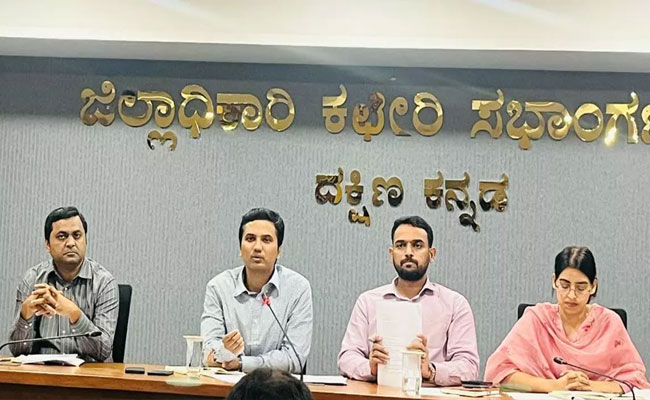Mumbai: The Maharashtra government has reportedly cut down on the stipend received by eight lakh beneficiaries of the Mukhya Mantri Majhi Ladki Bahin Yojana.
Under the revised structure, the beneficiaries will receive Rs 500 instead of Rs 1,500 per month because they already receive Rs 1,000 under another government scheme, the Namo Shetkari Mahasanman Nidhi (NSMN), as reported by the Times of India.
The Ladki Bahin scheme has the stipulation that its beneficiaries can avail other government schemes only if the benefit is capped at Rs. 1,500 per month.
“There has been an ongoing scrutiny. First to scan the applications that were sent by the districts to the state headquarters. And then to re-scrutinise the eligible cases,” TOI report quoted an official as saying.
Maharashtra Chief Minister Devendra Fadnavis had earlier said he expected the number of beneficiaries to reduce by 10-15 lakh after the scrutiny process. "We are not changing criteria or funding, just ensuring only eligible ones get the stipend," he claimed.
The Opposition remarked that the state government is cheating the women who voted them to power.
The Mahayuti government had launched the Ladki Bahin Yojana in July 2024, where it provides Rs 1,500 per month to eligible women under the scheme. In its poll manifesto ahead of the state Assembly elections, the Mahayuti had promised to increase the amount to Rs 2,100. However, this commitment has not been fulfilled.
Meanwhile, Maharashtra’s debt projection is Rs 9.3 lakh crore for 2025-26. The outlay for the Ladki Bahin scheme was reduced from Rs 46,000 crore to Rs 36,000 crore in the 2025-26 budget.
Let the Truth be known. If you read VB and like VB, please be a VB Supporter and Help us deliver the Truth to one and all.
Belagavi (Karnataka) (PTI): The Karnataka Excise Department has conducted a statewide crackdown on illegal liquor trade over the last two years, resulting in arrests and seizures of alcohol, Karnataka Excise Minister R B Timmapur said on Tuesday.
As many as 1,09,017 people were arrested, and seizures included 13.66 lakh litres of liquor and 27.19 lakh litres of beer, he said in a written reply to a starred question by Harihar BJP MLA B P Harish in the Karnataka Assembly.
The Minister said the enforcement drive covered the financial year 2023–24, 2024–25 up to June, and 2025–26 from July to October, targeting unauthorised liquor manufacture, storage, sale and transportation across the State.
"During this period, statewide enforcement drives resulted in a total of 1,84,570 raids against illegal liquor sales,” Timmapur said.
ALSO READ: BJP accuses Karnataka govt of 'failing' to prevent noise pollution caused by 'azaan'
He noted that 9,179 non-bailable cases and 91,968 bailable and compoundable cases under Section 15(A) of the Karnataka Excise Act, 1965, were registered during the same period.
According to him, there have been no reports indicating that students have become addicted to alcohol due to illegal liquor sales.
The sale of alcohol to minors is strictly prohibited under the Karnataka Excise Act, 1965, and the department has issued periodic instructions to initiate legal action against violators, with strict enforcement and investigation measures in place, the Minister said.
Excise officials are carrying out regular road and night patrols, collecting intelligence, monitoring habitual offenders and conducting raids to identify illicit distillation units, unauthorised liquor outlets and spurious liquor manufacturing centres, he said, adding the department is also enforcing the law to prevent the production, storage, sale and transport of spurious, non-duty-paid and unauthorised liquor.
Regular patrols are being conducted on national and state highways, with suspicious vehicles being subjected to checks.
At the district level, standing committee meetings are held under the chairmanship of Deputy Commissioners, and joint operations are carried out with the police and forest departments to curb excise-related offences.
The department is also conducting awareness programmes through Gram Sabhas and in schools and colleges to educate the public and students about the physical, mental and social health hazards associated with alcohol addiction and substance abuse, Timmapur added.





